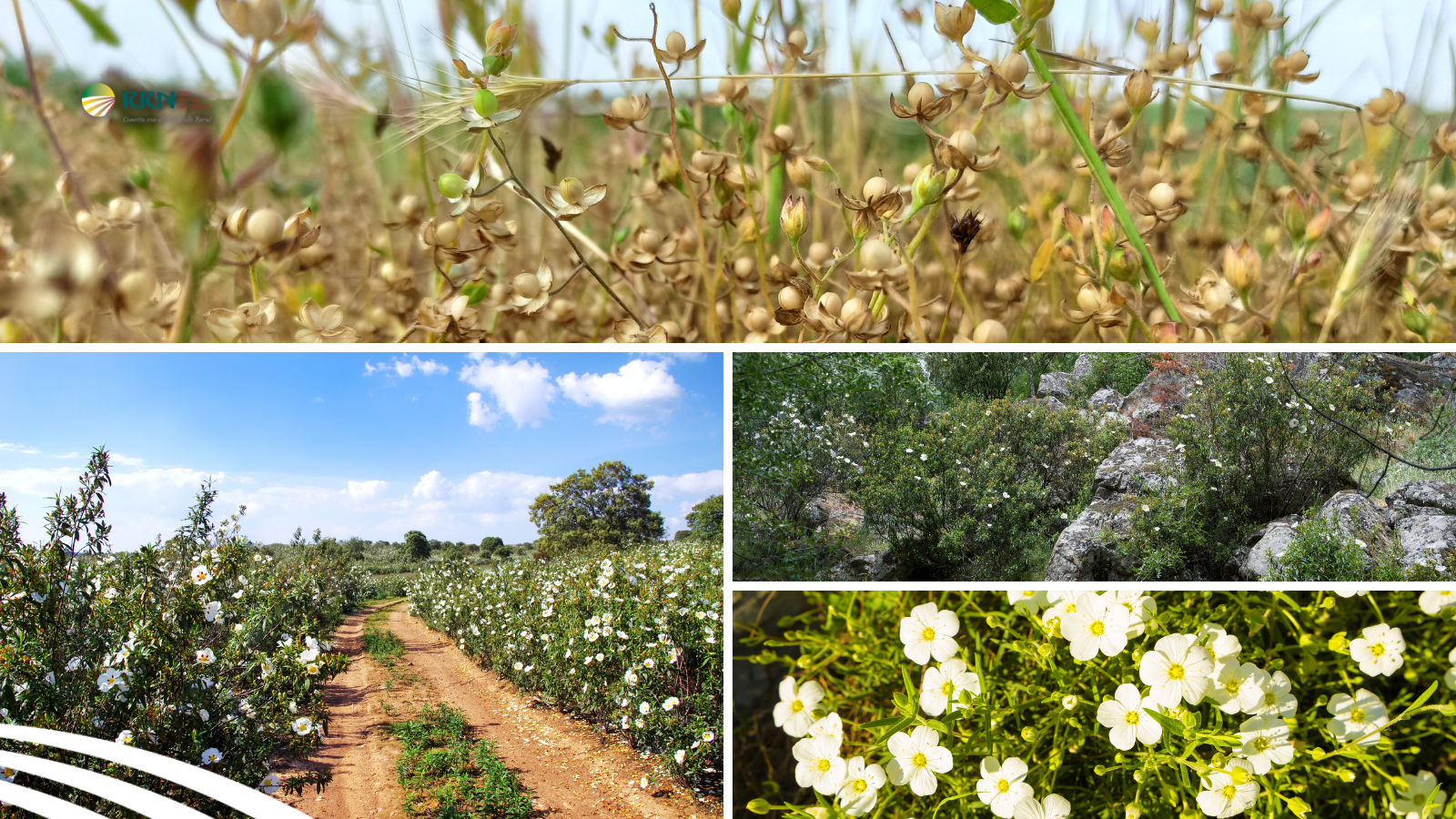
19 de January de 2023
Innovación
ESjara was created to develop the potential for obtaining derivatives from rockroses, and especially their essential oils, through the active management of sticky rockrose and steppe scrublands.
- The ESjara innovation project is launched for the sustainable management of rockrose forests and the promotion of the bioeconomy in rural areas.
- Spain is the country with the largest area of rockrose in the world.
- Through the renewal of the rockrose value chain, bush fires are also prevented.
Rural areas are full of new opportunities. Most of them can be found in the management of the natural elements that comprise them. Furthermore, these opportunities multiply when an innovative approach is applied to the management of available resources.
Such is the case of the incipient ESjara innovation project, which was created to develop the potential for obtaining derivatives from rockroses and, in particular, their essential oils, through the active management of Cistus ladanifer ( sticky rockrose ) and Cistus laurifolius ( steppe ) thickets.
The problem is localized: rockroses extend over more than 3.5 million hectares in our country, yet currently, fewer than 30,000 hectares are cultivated in a small part of southwestern Andalusia. Therefore, ESjara aims to expand its activities to the entire distribution area of rockroses, currently in a state of neglect, across the country.
Goals
The project's objectives include:
- The modernization of rockrose harvesting , which until now was manual and rudimentary, through mechanized harvesting.
- The transformation of the entire value chain through the implementation of remote sensing, digitalization, and traceability tools and methods.
- Increasing the added value of rockrose exploitation by identifying new applications for its products and by valorizing byproducts from essential oil production, such as hydrolate—a byproduct of distillation—and residual biomass.
Through innovation, ESjara transforms rockroses into an opportunity for economic development in rural areas ( bioeconomy ) while also becoming a tool for climate change adaptation and fire prevention through sustainable forest management.
Components
ESjara is an innovative project that arises from the ESENCIAL Operational Group ( GO Esencial ), which is coordinated by the Foundation Center for Services and Promotion of Forestry and its Industry of Castilla y León ( Cesefor ) and in which also participate the Center for Energy, Environmental and Technological Research ( CIEMAT ), the cooperative specialized in remote sensing Agresta , the Federation of Forestry Associations of Castilla y León ( FAFCYLE ) together with ASFOZA , ASFOBUR and FEDEHESA as subcontracted members; the essential oil producing companies Biolandes Andalucía SA and El Jarpil and the biotechnology company ROOTECO AGRICULTURE SL The General Directorate of Natural Heritage and Forestry Policy also collaborates in the project of the Regional Government of Castile and León and the Ministry of Sustainable Development, General Directorate of Natural Environment and Biodiversity of the Regional Government of Castile-La Mancha .
The project is subsidized by the Ministry of Agriculture, Fisheries and Food within the call for innovation projects of general interest by operational groups of the European Association for Innovation in Agricultural Productivity and Sustainability ( AEI-AGRI ), within the framework of the National Rural Development Program 2014-2020, called in 2022. It has a grant of €599,820.49 and will run until March 2025.









